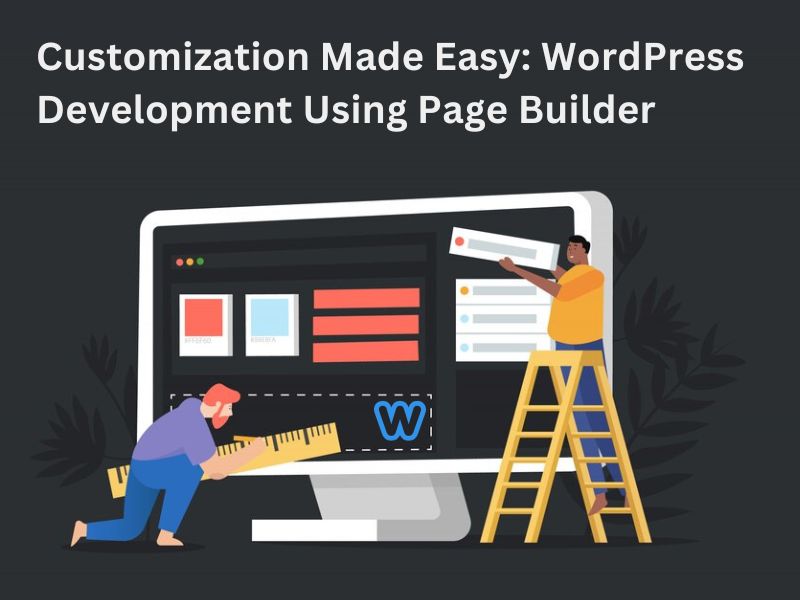Customization Made Easy: Harnessing the Full Potential of Page Builder Modules
 James Martin
James MartinTable of contents

Introduction: The Art of Tailoring Websites to Perfection
In the ever-evolving landscape of web development, customization reigns supreme. WordPress Page Builder Modules have ushered in an era where advanced customization is not just a possibility but a delightful reality. This guide delves into the intricacies of harnessing the full potential of page builder modules, exploring advanced customization options that empower designers and developers to tailor websites to unique specifications.
Exploring Advanced Customization Options
Fine-Tuning Typography:
Page builder modules provide granular control over typography. From font styles to letter spacing, designers can fine-tune every aspect of text elements, ensuring a bespoke and polished look that aligns with the brand's identity.
Advanced Styling Controls:
Dive into advanced styling options that go beyond basic color changes. Page builders offer controls for box shadows, gradients, and hover effects, allowing designers to add layers of sophistication to every element on the page.
Dynamic Color Schemes:
Utilize dynamic color schemes that adapt to user interactions or specific conditions. This advanced customization option ensures a visually dynamic and engaging website that responds intelligently to user behavior.
Harnessing the Power of Page Builder Modules
Dynamic Content Modules:
Explore dynamic content modules that enable the integration of live data and real-time updates. From dynamic image galleries to live social media feeds, these modules add a layer of dynamism to websites, keeping content fresh and engaging.
Custom Widget Integration:
Many page builders support the integration of custom widgets. This opens the door to a vast array of functionalities, from advanced search features to interactive calendars, empowering designers to create websites with unique and tailored user experiences.
Advanced Form Builders:
Enhance user engagement with advanced form builders. Page builder modules offer features such as conditional logic, multi-step forms, and integration with third-party tools, providing designers with the tools to create interactive and user-friendly forms.
Ensuring Mobile-Friendly Websites with Responsive Design Mastery
The Imperative of Responsive Design in the Mobile Era
As the majority of internet users access websites on mobile devices, ensuring a mobile-friendly design is no longer optional; it's imperative. Responsive Design Mastery with Page Builders goes beyond the basics, offering insights into how designers can create websites that adapt seamlessly to various screen sizes while leveraging the features of page builders.
Foundations of Responsive Design with Page Builders
Mobile Preview and Editing:
Page builders facilitate responsive design by providing mobile preview modes. Designers can edit and optimize the mobile view, ensuring that the website looks polished and functions seamlessly on smartphones and tablets.
Flexibility with Grid Systems:
Leverage the flexibility of grid systems to create responsive layouts. Page builders allow designers to define how elements behave on different screen sizes, ensuring a fluid and aesthetically pleasing design regardless of the device.
Device-Specific Styling:
Implement device-specific styling to address the unique characteristics of various devices. Page builders enable designers to apply custom styles for desktop, tablet, and mobile views, optimizing the user experience for each platform.
- Optimization for Touch Interactions
Touch-Friendly Navigation:
Page builders empower designers to create touch-friendly navigation menus and buttons. This ensures that users on mobile devices can navigate the website effortlessly, contributing to a positive and intuitive user experience.
Gesture-Based Interactions:
Explore the integration of gesture-based interactions for mobile users. From swiping image galleries to interactive sliders, page builders provide the tools to implement gestures that enhance user engagement on touch-enabled devices.
Performance Optimization for Mobile
Image Compression and Lazy Loading:
Prioritize image compression and lazy loading features offered by page builders. These optimization techniques contribute to faster loading times on mobile devices, improving the overall performance and user experience.
Mobile-Specific Content Delivery:
Implement strategies for mobile-specific content delivery. Page builders allow designers to tailor the content displayed on mobile devices, ensuring that users receive a streamlined and relevant experience on smaller screens.
Conclusion
WordPress Development Using Page Builder: The customization potential offered by page builder modules and the mastery of responsive designs are integral components of elevating design excellence in the digital landscape. By harnessing the full potential of advanced customization options and modules, designers can create websites that not only meet but exceed user expectations. As we navigate the mobile era, responsive design mastery ensures that websites are not just visually appealing but also function seamlessly across diverse devices. With the right approach and the powerful features of page builders, designers can truly harness the full potential of customization, creating digital experiences that leave a lasting impression.
Subscribe to my newsletter
Read articles from James Martin directly inside your inbox. Subscribe to the newsletter, and don't miss out.
Written by

James Martin
James Martin
ames Martin: 7+ years in WordPress development. Crafting digital experiences, one line of code at a time. Let's bring your ideas to life!